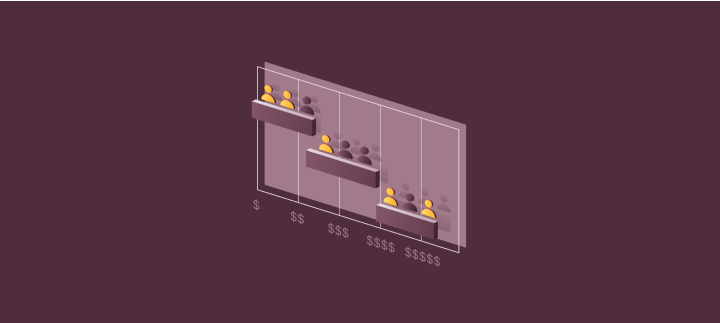How to pay international contractors in Australia
Australian businesses hiring local contractors must navigate the nation's intricate labour and tax regulations to ensure compliance. This includes adhering to Australia's comprehensive employment and taxation laws when compensating these contractors.
Before you receive your first contractor invoice, read on to learn what you need to know to correctly classify contractors, onboard them, and pay them according to Australia's labour laws.
Step #1: Classify your workers
Classifying workers in Australia correctly is crucial. Misclassifying employees as contractors can result in fines, back taxes, and other harsh penalties from Australian courts and the Australian Taxation Office (ATO). 'Sham contracting' penalties can include:
- Court-ordered fines of up to AUD 16,500 for individuals and AUD 82,500 for companies.
- Make-up payments for every missed superannuation contribution, plus interest and admin fees.
- Additional fines up to twice the amount of the superannuation charge.
- A failure-to-withhold-taxes cost of the full amount that should’ve been withheld, including a Medicare levy.
To help employers determine whether a hire meets the criteria for an employee or independent contractor, the Australian government’s Fair Work Ombudsman laid out a series of indicators that, when considered all together, draw the distinction:
Contractors
Employees
High level of worker control. Contractors are generally given more autonomy to determine how to complete the work and when to do it.
More direction from the employer. Employees are generally subject to more control and direction from their employer, who'll provide guidance on how to perform the work and may set specific hours of work.
Equipment and tools owned by the worker.
Equipment and tools typically provided by the company.
Less integrated. Contractors tend to be independent. They’re more likely to work remotely and use their own tools and equipment.
Highly integrated. Employees are typically more integrated into the employer's organisation. For example, they may work at the employer's premises.
No entitlement to benefits. Contractors aren't entitled to the same benefits and protections as employees, and they're responsible for paying their own taxes.
Entitled to benefits. Employees are entitled to certain employment benefits and protections, such as minimum wage, overtime pay, and annual leave. They may also be entitled to benefits like health insurance, retirement plans, and paid sick leave.
Time-bound engagement. Contractors are typically engaged for a specific project or period.
Indefinite engagement. Employees are generally hired for an indefinite period.
Risk of loss. Contractors may assume more risk and liability for the work they perform.
No risk of loss. Employees are generally protected from liability for work-related issues.
Subcontracting. Contractors can delegate work to be performed by another person or business.
No subcontracting. Employees are expected to do their work themselves. They can’t delegate responsibilities without company approval.
Step #2: Determine the best way to pay your contractors
Before processing payments to contractors in Australia, determining the most efficient and compliant method is key. With the growth of remote work, Australian businesses now have various options for paying local contractors. Here are some streamlined approaches:
- Bank transfers. Direct bank transfers are a reliable and efficient way to pay contractors. This method ensures payments are directly deposited into the contractors' bank accounts quickly and securely, leveraging Australia's banking infrastructure.
- Digital wallets and platforms. Digital wallets and payment platforms offer a convenient alternative for transferring funds. They typically provide the capability to manage payments with clear visibility on fees and exchange rates, should there be a need to convert currencies for any reason. It's important to select platforms that operate seamlessly within Australia, ensuring both compliance and convenience.
- Payroll services integration. Typically, contractors aren't included in payroll, since they aren't subject to the same withholdings as employees. Instead, they invoice for their services, which goes through accounts payable for many companies. But with Rippling, you can pay your employees and contractors, wherever they are, in a single pay run.
Step #3: Use payroll software to process payments
As you saw in Step #2, there are multiple ways to pay contractors. The fastest and simplest way, however, is to use global payroll software.
With Rippling, you can pay employees and contractors in a single pay run. Here’s a preview of how Rippling’s payroll system works:

Step #4: Ensure your contractor has the right tax information
Employers aren't required to withhold and pay income taxes for contractors in Australia. The ATO sends contractors activity statements to keep track of their income and business expenses (to claim any qualifying deductions), which contractors then complete and file quarterly.
Generally, contractors are considered independent and are responsible for managing their own tax obligations. However, there are specific circumstances under the Pay as You Go (PAYG) system where businesses must withhold tax from payments made to contractors. This is particularly the case if the contractor doesn't provide an Australian Business Number (ABN) or if the services provided fall under the categories requiring withholding, even when an ABN is quoted. These situations aren't voluntary agreements but regulatory requirements.
To file taxes, contractors typically need:
- An individual tax file number
- An Australian Business Number (since individual contractors run their own businesses)
- A PAYG withholding registration
- A Goods and Services Tax (GST) registration if their business income exceeds AUD 75,000
Independent contractors usually make their own superannuation contributions. However, companies may have to make payments on a contractor’s behalf if the worker is paid mainly for their labour and not contingent upon a specific result (e.g., a freelance secretary doing clerical work 15 hours a week). In this case, employers have to offer contractors a choice of super fund within four weeks of their start date and guarantee to contribute a percentage of their wage.
Head spinning? We've got you! One of the benefits of processing payments through a payroll system like Rippling is offloading the paperwork and letting us do the calculations and filing for you.
FAQs about paying contractors in Australia
Do you need to withhold taxes when paying contractors in Australia?
Contractors typically handle their own taxes as independent entities. Yet, under Australia's PAYG system, businesses are obligated to withhold tax from contractor payments in specific situations, such as when a contractor fails to provide an ABN or if the provided services necessitate withholding, regardless of an ABN being quoted. These are regulatory requirements, not voluntary arrangements.
Does the Australian minimum wage apply to independent contractors?
No, minimum wage laws don't apply to independent contractors in Australia.
Do contractors in Australia get benefits?
No, independent contractors in Australia aren't entitled to benefits in the same way as employees. Offering employee benefits to independent contractors can actually increase the risk that the courts will consider the contractors to have been misclassified.
Can you manually pay contractors in Australia?
Yes. Many small business owners opt to manually process payments to contractors as a cost-saving measure. However, this approach can become increasingly time-consuming, particularly as their business expands and the number of contractors they work with grows.
It's also important to note that manually processing payments comes with some risks:
- Compliance. Running payroll manually means assuming the risk of human error and omission. Protect yourself and your business with Rippling, which automatically enforces compliance with any applicable local laws, no matter where your contractors live.
- Security. Manual payroll processing also poses security risks, especially if you use spreadsheets or paper records. Sensitive employee information can be lost, stolen, or misused.
Make payroll automatic by using Rippling. Rippling syncs all your business's HR data with payroll, eliminating the need for manual data entry entirely. Employees and contractors, no matter where they are, get paid quickly (and compliantly) in a single pay run.
How do you turn a contractor into an employee in Australia?
While hiring independent contractors over full-time employees can come with financial benefits, sometimes you do need a full-time employee. The challenge is making sure all the legal requirements are in order: Australia's labour laws require payroll deductions, benefits, and more for employees that you don't have to worry about for contractors.
With Rippling, you can effortlessly manage contractors and quickly transition them to full-time employees with legally compliant paperwork, benefits administration, payroll, and more. Rippling handles it all so you stay compliant from onboarding to offboarding.
Rippling and its affiliates do not provide tax, legal or accounting advice. This material has been prepared for informational purposes only, and is not intended to provide, and should not be relied on for, tax, legal, or accounting advice. You should consult your own tax, legal, and accounting advisors before engaging in any related activities or transactions.







